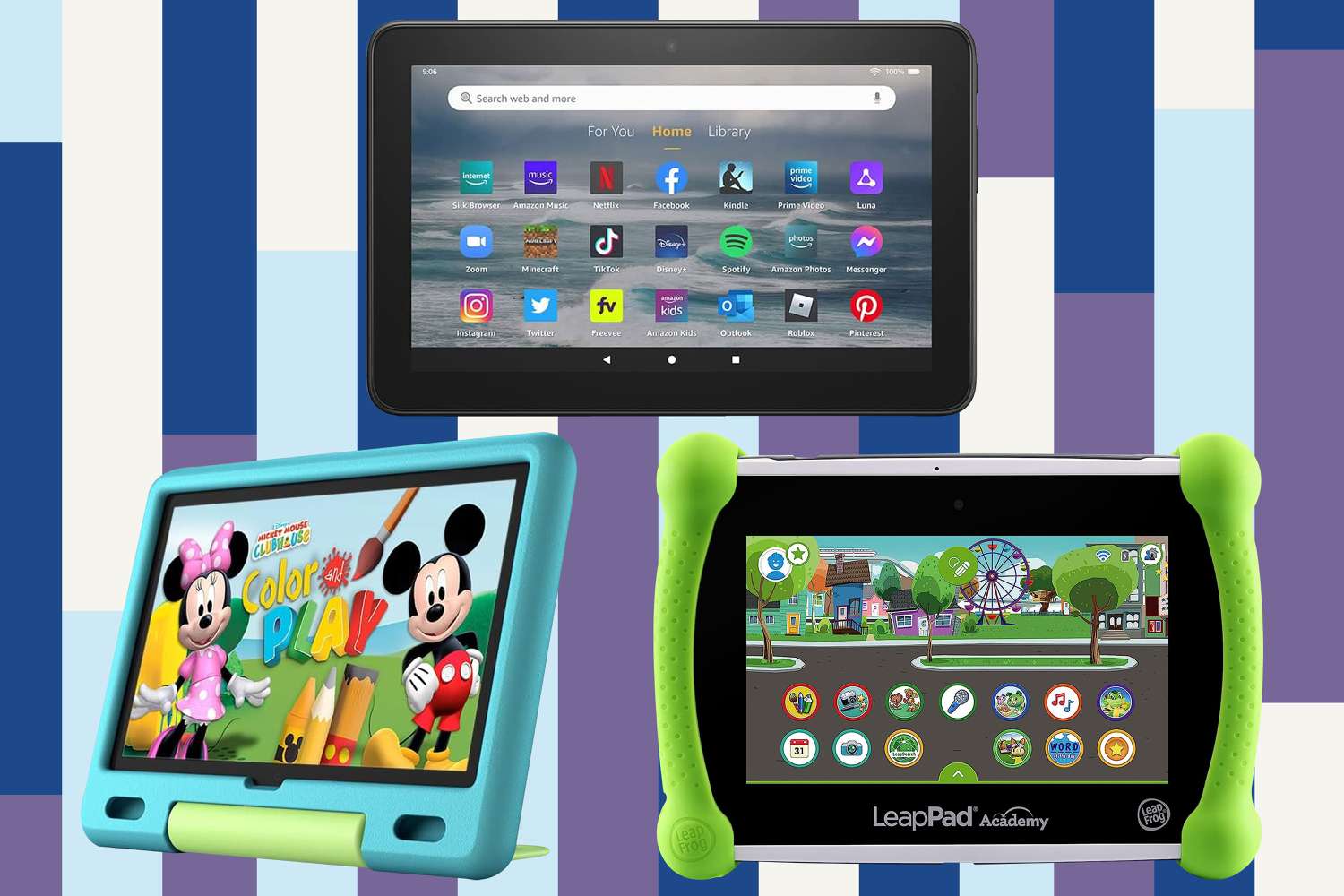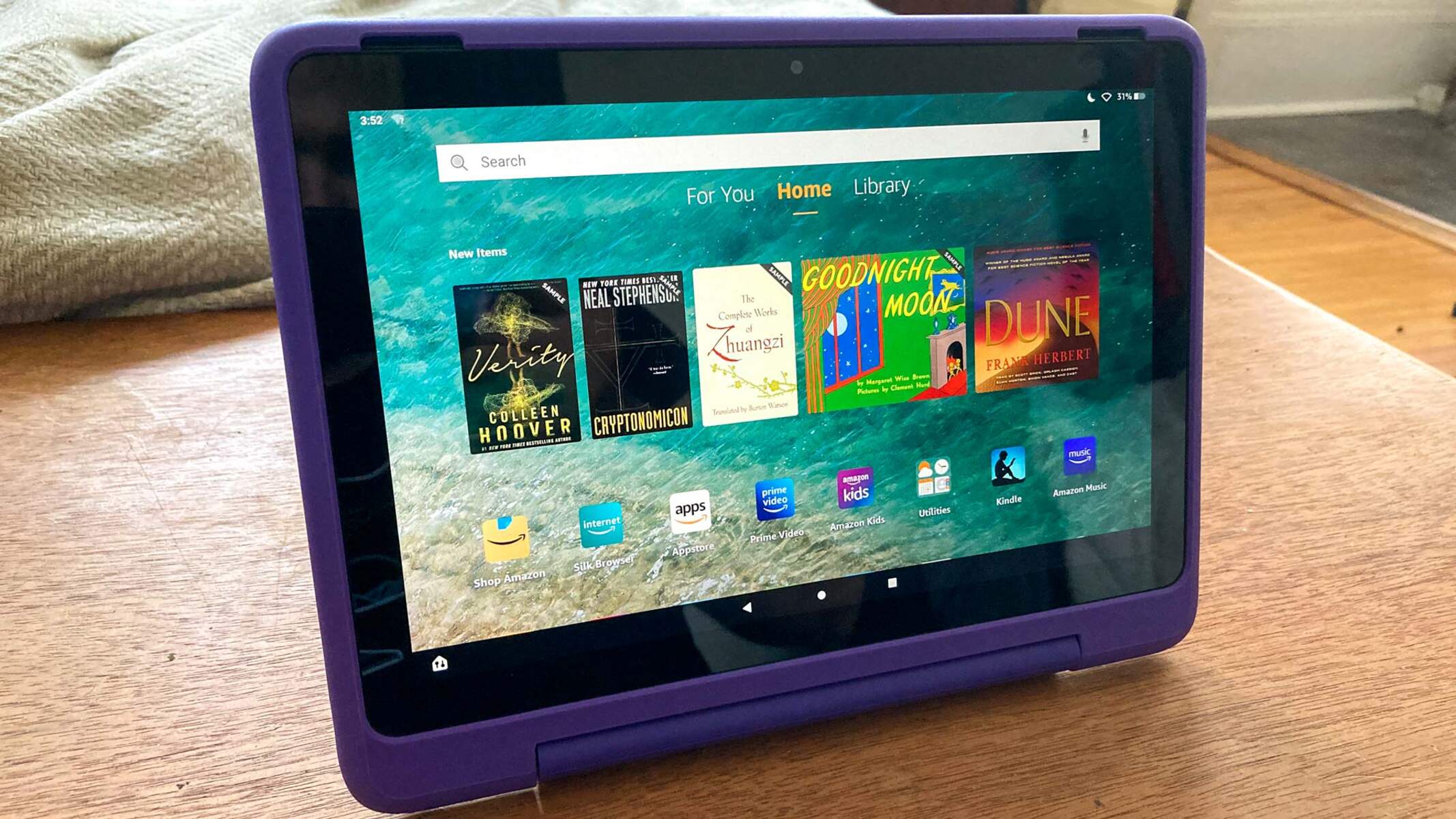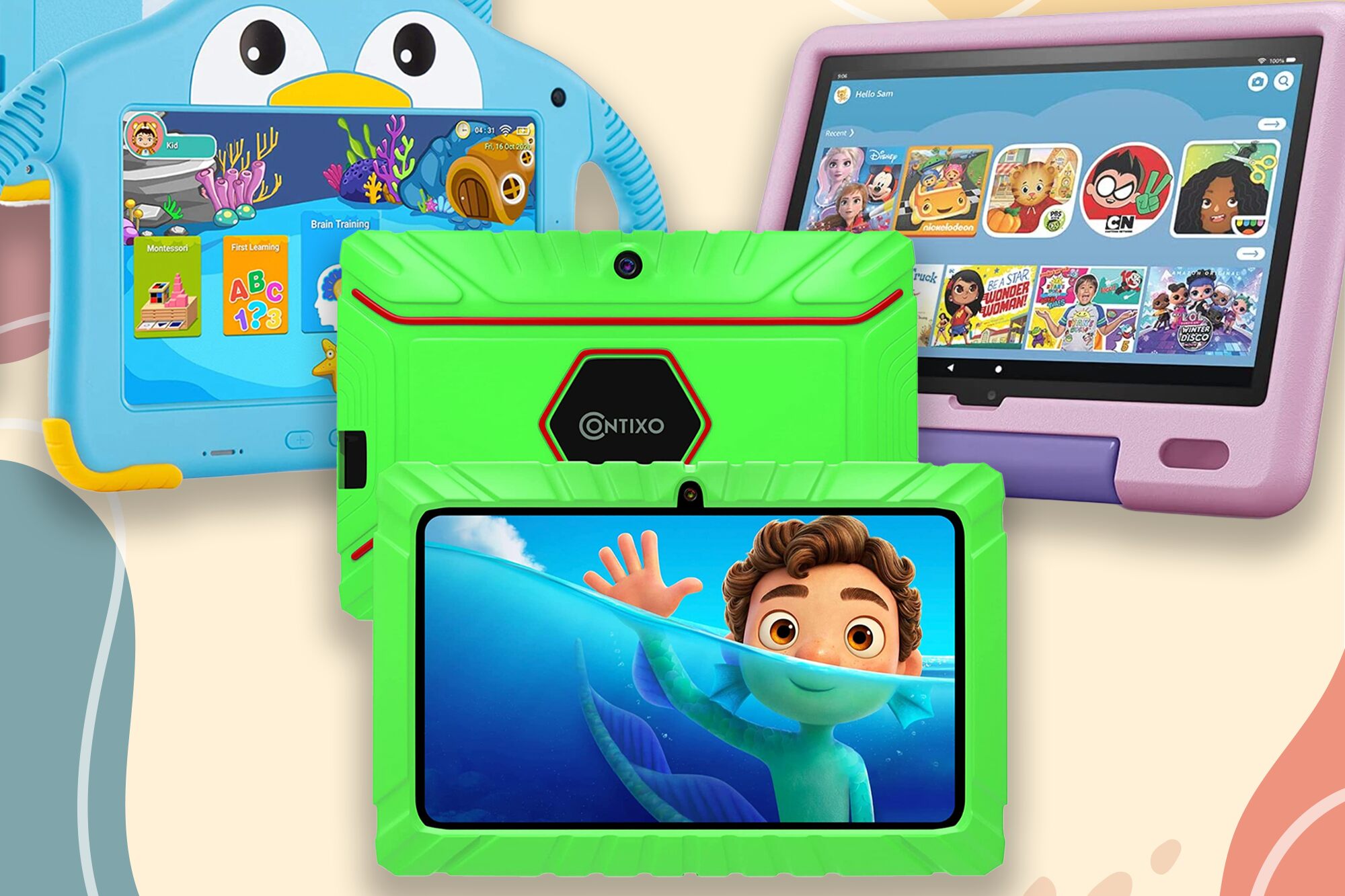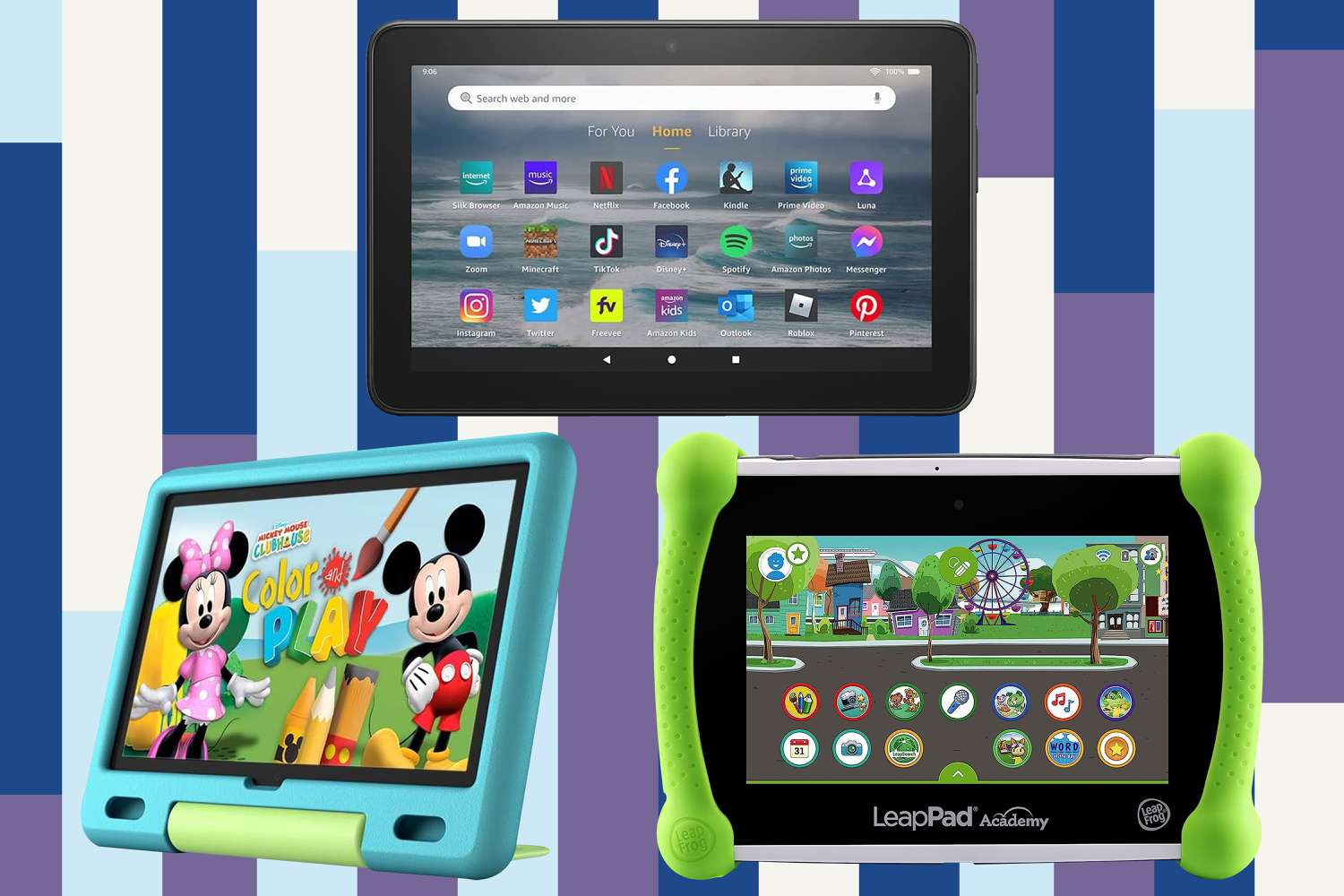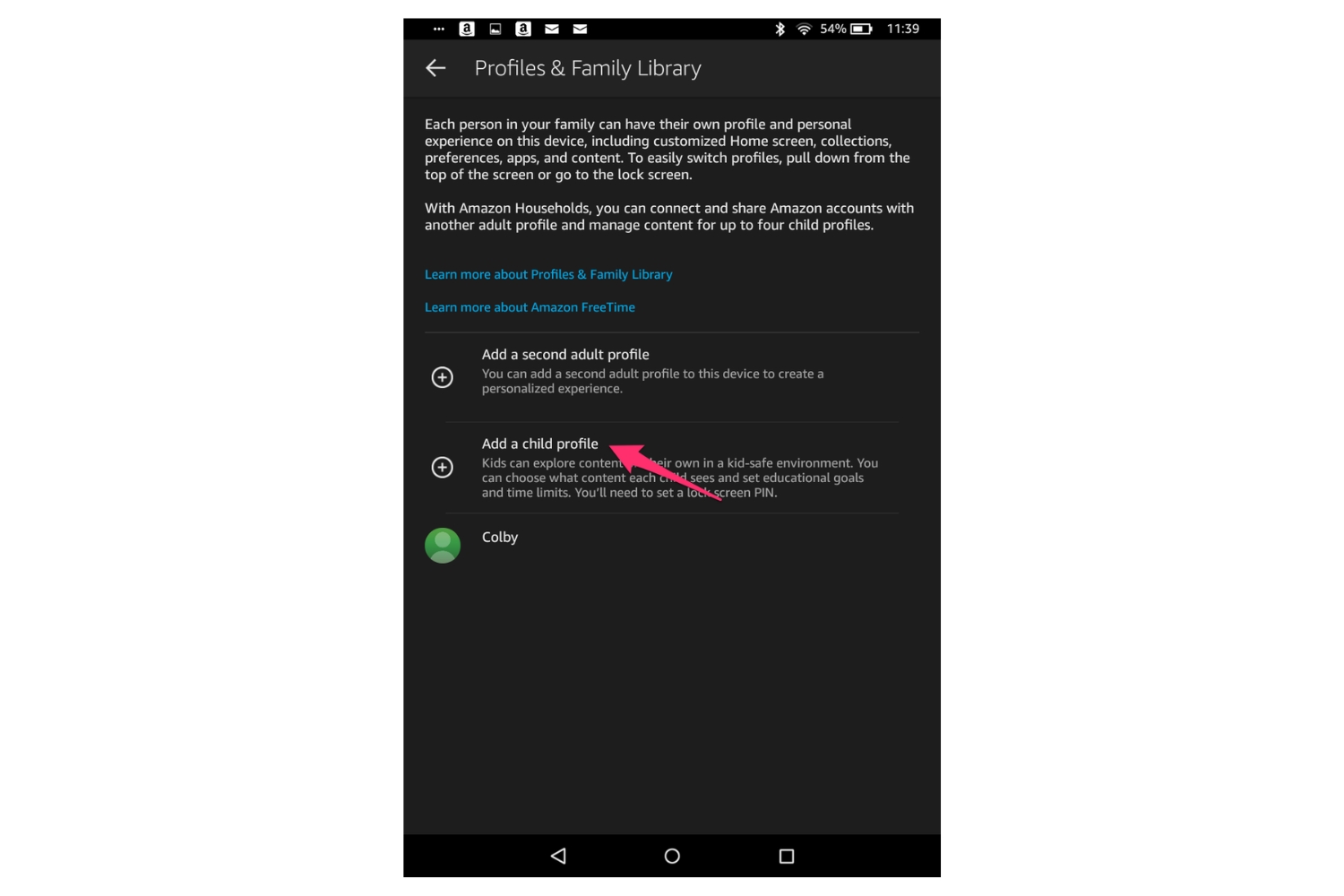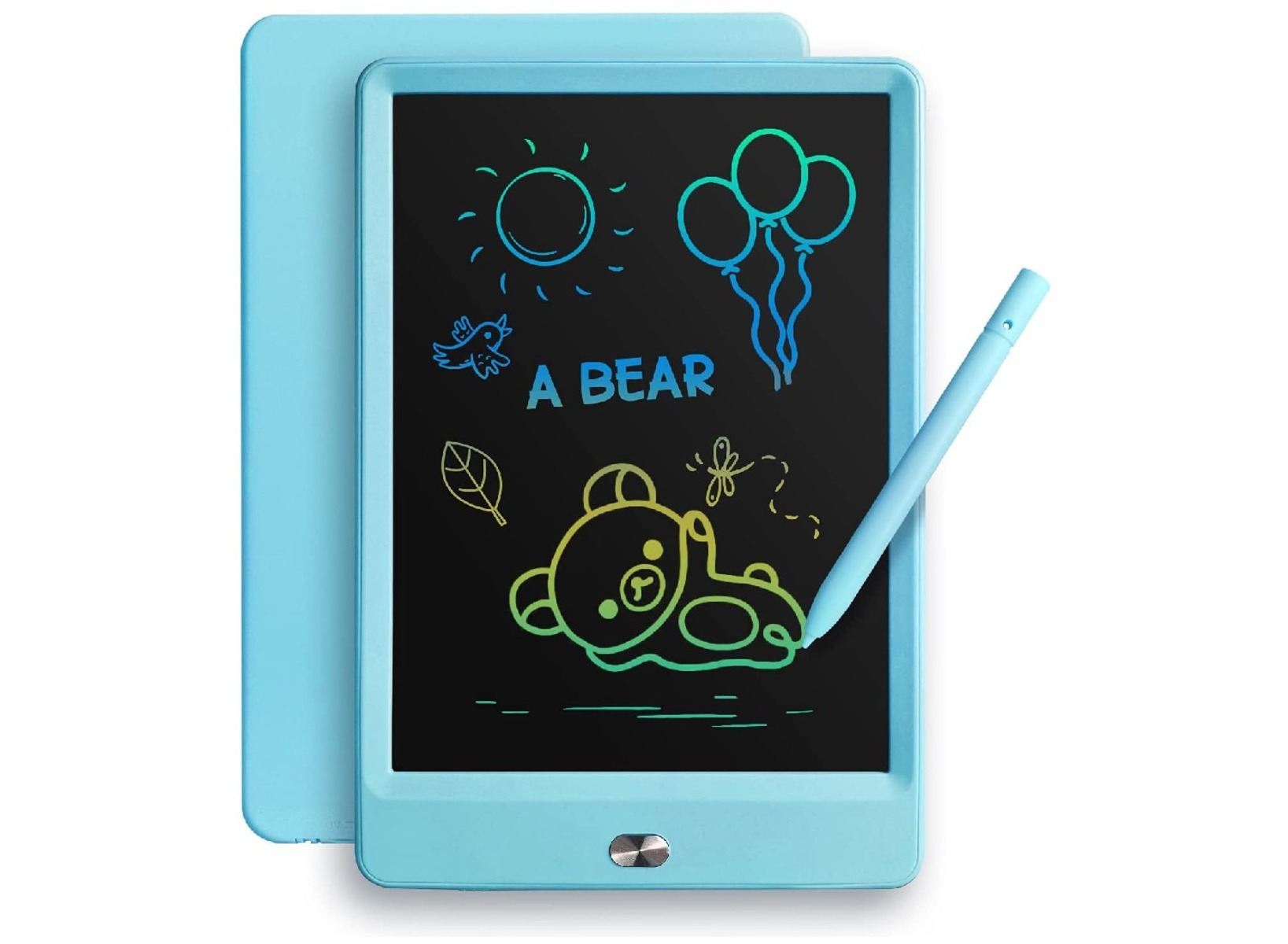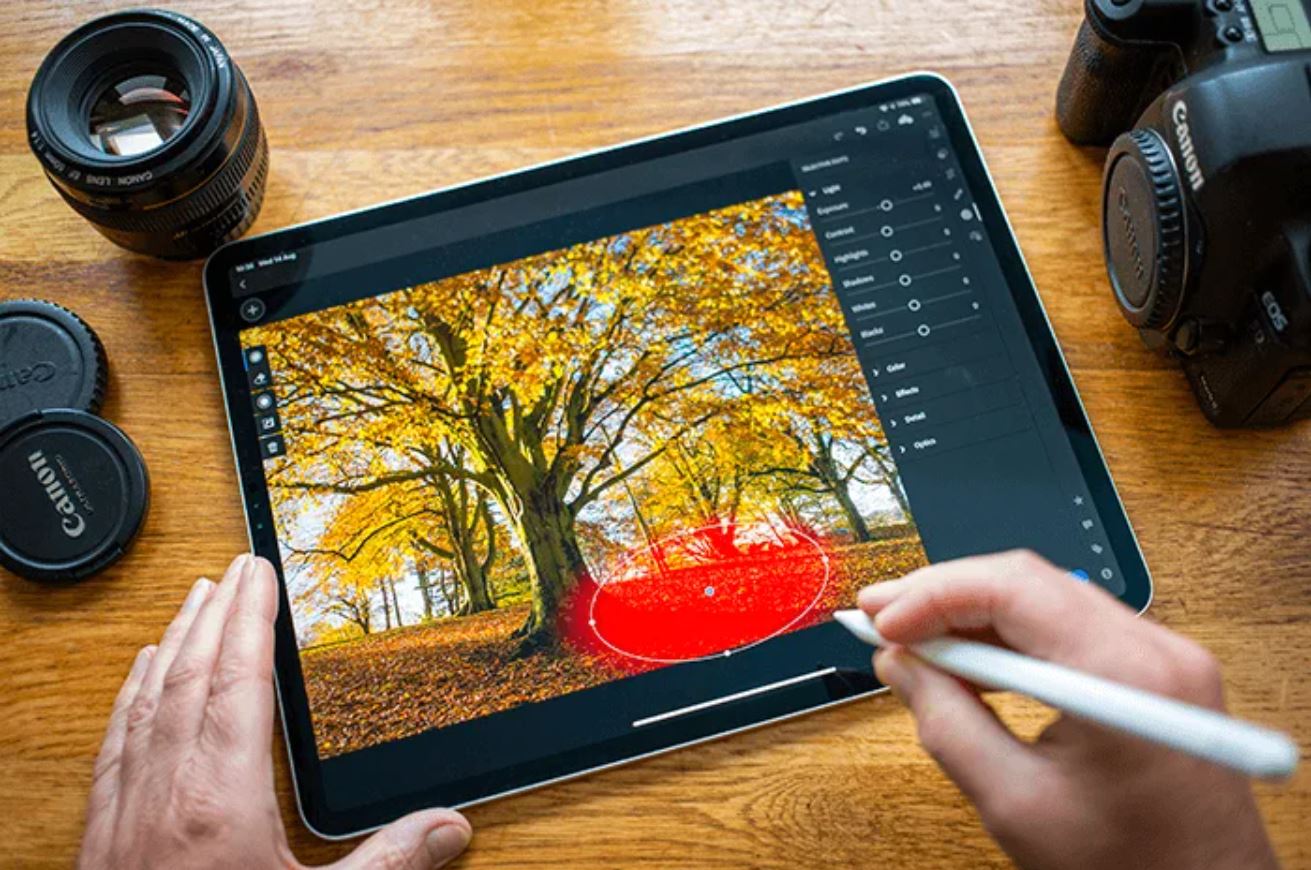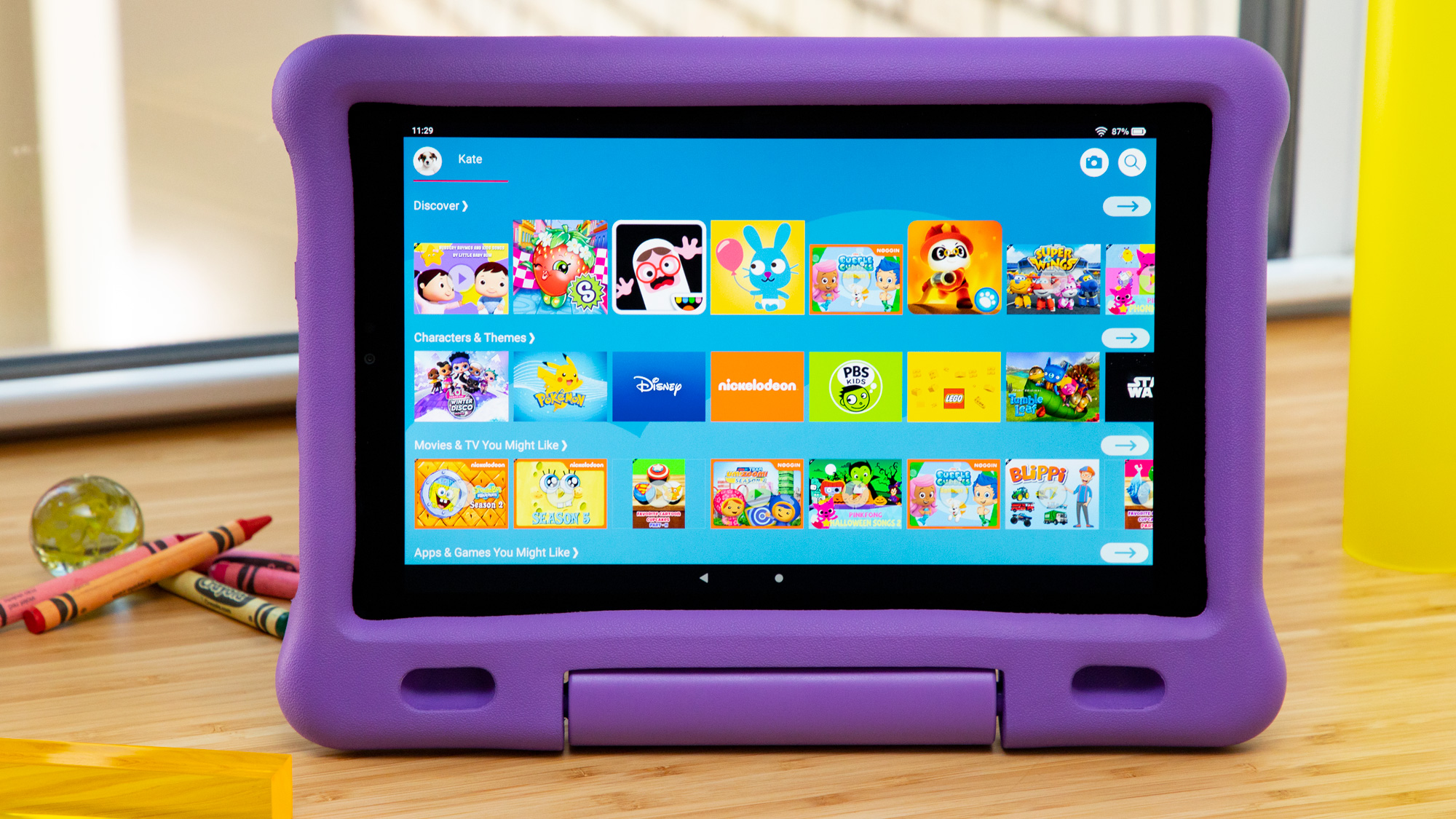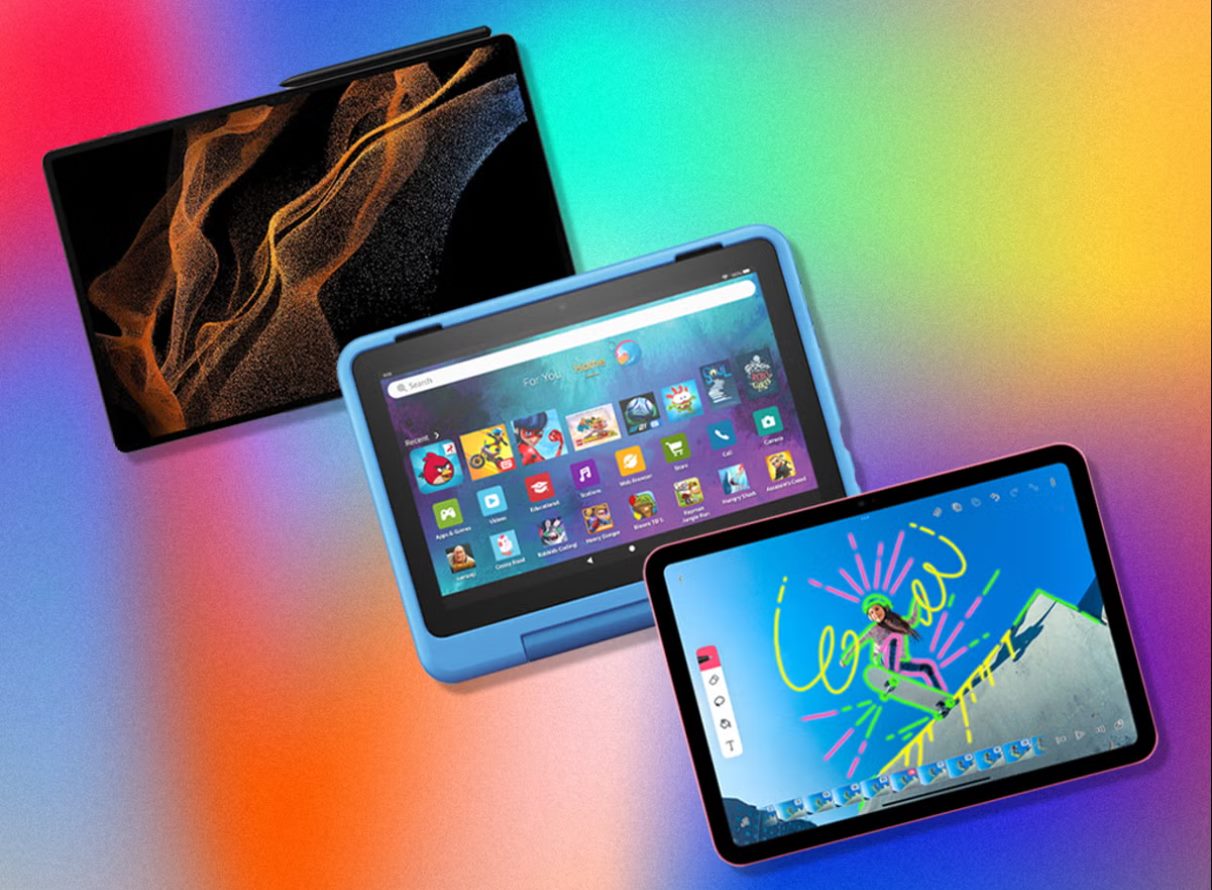Introduction
When it comes to choosing a tablet for kids, there are numerous factors to consider. From age-appropriate content to durability and parental controls, finding the best tablet that combines learning and entertainment can be a daunting task. As technology increasingly becomes a part of our children’s lives, providing them with a tablet that is both educational and fun can aid in their cognitive development and keep them engaged.
In today’s digital age, tablets have become popular devices among children of all ages. These devices offer a wide range of interactive experiences that can enhance learning and entertainment for kids. However, not all tablets are created equal, and selecting the right tablet for your child requires careful consideration.
With so many options available on the market, it’s important to understand the specific needs of your child and how a tablet can meet those requirements. Age appropriateness, durability, content availability, and parental controls are just a few of the factors that come into play when choosing the best tablet for kids. In this article, we will discuss the various factors to consider and recommend some of the top tablets suitable for different age groups.
Whether you’re looking for a tablet for a toddler, preschooler, elementary school kid, tween, or teenager, we’ve got you covered. By the end of this article, you will have a better understanding of the features to look for in a kid-friendly tablet and the best options available on the market.
Factors to Consider When Choosing a Tablet for Kids
Choosing the right tablet for your child goes beyond picking the one with the latest features or the lowest price. There are several factors that you should take into consideration to ensure you make the best decision. Here are some key factors to keep in mind:
- Age appropriateness: Consider the age of your child and choose a tablet that is suitable for their developmental stage. Younger children may benefit from tablets specifically designed for their age group, while older children may need more advanced features.
- Content Availability: Look for a tablet that offers a wide range of age-appropriate content, including educational apps, games, e-books, and videos. Ensure that the tablet has access to a reputable app store with a vast selection of child-friendly content.
- Parental Controls: Opt for a tablet that provides robust parental control settings. This allows you to monitor and manage your child’s screen time, regulate access to certain apps or websites, and ensure their online safety.
- Durability: Kids can be rough on electronics, so it’s essential to choose a tablet that is durable and able to withstand accidental drops and spills. Look for tablets with reinforced corners, scratch-resistant screens, and sturdy build quality.
- Battery Life: Consider the battery life of the tablet to ensure that it can withstand prolonged use without constantly needing to be charged. A tablet with a longer battery life will provide uninterrupted entertainment and learning opportunities for your child.
By considering these factors, you can narrow down your options and find a tablet that aligns with your child’s needs and your parenting preferences. Remember, every child is different, so it’s important to choose a tablet that suits their individual interests, learning style, and age group.
Tablet Options for Different Age Groups
Each age group has its own unique needs and preferences when it comes to tablets. Finding the perfect tablet that caters to your child’s age group is crucial for their optimal learning and entertainment experience. Let’s explore some of the best tablet options for different age groups:
Toddlers:
For toddlers, simplicity and durability are key. Look for tablets specifically designed for young children, with colorful interfaces, interactive games, and educational content. Options like the LeapPad Epic Academy Edition and Amazon Fire HD Kids Edition offer age-appropriate apps, sturdy build quality, and parental controls.
Preschoolers:
Preschoolers benefit from tablets that encourage creativity and early learning skills. Tablets such as the Samsung Galaxy Tab A Kids Edition and Apple iPad Mini with kid-friendly cases provide access to a wide range of educational apps, interactive books, and art tools.
Elementary School Kids:
Elementary school kids require tablets with more advanced features and access to a broader range of educational content. Options like the Lenovo Tab M10 FHD Plus and Google Nexus 9 offer larger screens, faster processors, and increased storage capacity, making them ideal for online research, homework assignments, and interactive learning activities.
Tweens and Teens:
As kids grow older, their tablet needs evolve. Tablets like the Apple iPad Air and Samsung Galaxy Tab S6 Lite provide high-quality displays, powerful processors, and extensive app ecosystems, making them suitable for both educational and entertainment purposes. These tablets also offer features like multi-tasking capabilities, allowing tweens and teens to enhance their productivity.
Remember, while these recommendations can serve as a starting point, it’s essential to consider your child’s individual interests and preferences when choosing a tablet. Each child is unique, and selecting a tablet that aligns with their specific needs and age group will ensure an enriching experience.
Best Tablets for Toddlers
When it comes to selecting a tablet for toddlers, it’s important to choose one that combines educational content and durability. Here are some of the top tablet options for this age group:
LeapPad Epic Academy Edition
The LeapPad Epic Academy Edition is specifically designed for young children. It offers a 7-inch touchscreen, a durable construction, and a library of over 750 age-appropriate learning games, videos, and e-books. The tablet is equipped with parent controls, allowing you to monitor your child’s activities and set usage limits.
Amazon Fire HD Kids Edition
The Amazon Fire HD Kids Edition features a 10.1-inch display and a kid-proof case to protect against drops and spills. It offers a one-year subscription to Amazon FreeTime Unlimited, which provides access to thousands of age-appropriate apps, books, videos, and educational content. The tablet also includes robust parental controls and allows for multiple user profiles.
Vtech Little Apps Tablet
The Vtech Little Apps Tablet is a budget-friendly option that introduces toddlers to basic concepts like numbers, letters, and colors. It features a colorful touchscreen, a keyboard, and a variety of engaging activities. This tablet is specifically designed for little hands and promotes fine motor skills development.
Fisher-Price Laugh & Learn Smart Stages Tablet
The Fisher-Price Laugh & Learn Smart Stages Tablet offers a simple and interactive design for toddlers. It features light-up buttons, music, and learning content that adapts to the child’s age and stage of development. The tablet introduces early learning concepts, shapes, numbers, and letters in a fun and engaging way.
These tablets provide a safe and entertaining learning environment for toddlers, with features and content that are specifically tailored to their needs. By choosing one of these options, you can foster early learning and cognitive development while ensuring durability and age-appropriate content.
Best Tablets for Preschoolers
Preschoolers have a growing curiosity and desire to learn, making it important to choose a tablet that offers educational content and age-appropriate features. Here are some of the best tablet options for preschoolers:
Samsung Galaxy Tab A Kids Edition
The Samsung Galaxy Tab A Kids Edition is a versatile tablet that combines learning and entertainment. It features a durable design with a bumper case to protect against accidental drops. The tablet comes pre-loaded with educational games, videos, and apps that promote early learning skills, creativity, and problem-solving. Parental controls allow you to manage usage and customize the content for your child.
Apple iPad Mini
The Apple iPad Mini, paired with a kid-friendly case, is a great option for preschoolers. It offers a high-resolution display, a powerful processor, and access to a vast collection of educational apps. The tablet supports multi-touch gestures and allows for a seamless user experience, making it ideal for interactive learning activities and creative exploration.
Amazon Fire HD 8 Kids Edition
The Amazon Fire HD 8 Kids Edition is a budget-friendly tablet that offers a kid-proof case and a one-year subscription to Amazon FreeTime Unlimited. It provides access to thousands of age-appropriate books, apps, games, and videos that cater to preschoolers’ learning needs. The tablet also includes parental controls, allowing you to set screen time limits and manage content.
LeapFrog LeapPad Platinum
The LeapFrog LeapPad Platinum is a dedicated learning tablet for preschoolers. It features a 7-inch touchscreen, a built-in camera, and hundreds of educational games, apps, and e-books. The tablet offers a secure web browser and a stylus for interactive drawing and handwriting practice. Parental controls enable you to monitor your child’s progress and customize their learning experience.
These tablets provide a safe and educational platform for preschoolers to explore and learn. With their engaging content and interactive features, they enhance cognitive development, language skills, and creativity. Consider these options and choose the one that aligns with your child’s interests and learning style.
Best Tablets for Elementary School Kids
Elementary school kids require tablets that can support their expanding educational needs and provide them with a platform for interactive learning. Here are some of the top tablet options for this age group:
Lenovo Tab M10 FHD Plus
The Lenovo Tab M10 FHD Plus is a feature-rich tablet that offers a 10.3-inch FHD display, powerful processing capabilities, and a long-lasting battery life. It provides a smooth and responsive user experience, making it ideal for online research, digital assignments, and interactive learning apps. The tablet’s durability and enhanced parental controls make it suitable for young learners.
Google Nexus 9
The Google Nexus 9 is a versatile tablet that caters to the needs of elementary school kids. It features a high-resolution display, a fast processor, and a user-friendly interface. The tablet provides access to a wide range of educational apps, e-books, and online resources. With its seamless multi-tasking capabilities, it supports productive activities like research, writing, and collaboration.
Apple iPad
The Apple iPad is a popular choice for elementary school kids due to its extensive app ecosystem and powerful features. It offers a vibrant Retina display, a fast A12 Bionic chip, and support for the Apple Pencil. The iPad provides access to a wealth of educational apps, e-books, and creative tools, empowering students to explore their interests and enhance their learning experience.
Microsoft Surface Go
The Microsoft Surface Go is a versatile tablet that caters to the needs of elementary school kids. It combines the functionality of a tablet with the power of a laptop. With a 10.5-inch touchscreen, a detachable keyboard, and precise pen input, it supports a variety of learning activities. The tablet runs Windows 10, allowing students to utilize familiar productivity tools for assignments and projects.
These tablets provide elementary school kids with the tools they need to excel academically and expand their knowledge. Consider these options based on your child’s specific requirements, including display size, processing power, and compatibility with educational software.
Best Tablets for Tweens and Teens
Tweens and teens require tablets that offer powerful performance, a wide range of features, and access to educational and entertainment content. Here are some of the top tablet options for this age group:
Apple iPad Air
The Apple iPad Air is a versatile tablet that offers a powerful A14 Bionic chip, a stunning Retina display, and support for the Apple Pencil. It provides a seamless user experience and allows for multitasking, making it ideal for both productivity and entertainment. With access to a vast collection of educational apps and creative tools, the iPad Air caters to the varied needs of tweens and teens.
Samsung Galaxy Tab S6 Lite
The Samsung Galaxy Tab S6 Lite boasts a 10.4-inch display, an S Pen for precise input, and a long-lasting battery life. It offers an immersive viewing experience and a powerful Octa-core processor, making it suitable for productivity tasks, multimedia consumption, and creative endeavors. The tablet provides access to a wide range of educational apps and content through the Galaxy Store.
Microsoft Surface Pro 7
The Microsoft Surface Pro 7 is a highly capable tablet that combines the power of a laptop with the versatility of a tablet. It features a 12.3-inch PixelSense display, a detachable keyboard, and support for the Surface Pen. With its robust performance and Windows 10 operating system, it allows tweens and teens to complete school assignments, engage in creative projects, and multitask seamlessly.
Amazon Fire HD 10
The Amazon Fire HD 10 offers a large 10.1-inch display, fast performance, and access to a wide range of apps, games, and media content. It provides an affordable option for tweens and teens who want to enjoy multimedia entertainment, access educational resources, and stay connected with friends and family. The tablet also includes parental controls to ensure a safe and controlled digital environment.
These tablets offer the performance, features, and content that tweens and teens need to balance their academic requirements and personal interests. Consider these options based on factors such as processing power, display quality, compatibility with productivity tools, and access to educational apps.
Features to Look for in a Kid-Friendly Tablet
When choosing a tablet for kids, there are several important features to consider. These features ensure that the tablet is not only entertaining but also safe and conducive to learning. Here are some key features to look for in a kid-friendly tablet:
Durability
Kids can be rough on electronics, so it’s crucial to choose a tablet that can withstand accidental drops and bumps. Look for tablets with durable construction and features like reinforced corners and scratch-resistant screens.
Parental Controls
Parental controls are essential for safeguarding your child’s online activities. Look for tablets that offer comprehensive parental control settings, allowing you to set screen time limits, filter content, and monitor your child’s usage.
Age-Appropriate Content
Ensure that the tablet provides access to age-appropriate content such as educational apps, games, e-books, and videos. Look for tablets with curated content libraries or the ability to customize content based on your child’s age and developmental stage.
Robust Parental Controls
In addition to basic parental controls, look for tablets that offer advanced features like web filtering, app restrictions, and activity logs. These features allow you to have more control over your child’s digital experience and ensure their safety.
Easy-to-Use Interface
Choose a tablet with a user-friendly interface that is intuitive and easy for kids to navigate. Look for features like large icons, simple menus, and touchscreen responsiveness to enhance your child’s interaction with the tablet.
Educational Content
Look for tablets that offer a wide range of educational content, including interactive learning apps, educational games, and e-books. The availability of educational content can enhance your child’s cognitive development and educational growth.
Battery Life
Consider the battery life of the tablet, especially if your child will be using it for extended periods. Choose a tablet with a long battery life to ensure uninterrupted learning and entertainment without frequent recharging.
By considering these features, you can find a tablet that provides a safe and enriching digital experience for your child. Keep in mind that the right combination of features will depend on your child’s age, interests, and your own preferences as a parent.
Pros and Cons of Each Tablet Option
LeapPad Epic Academy Edition:
Pros: Durable construction, age-appropriate content, extensive parental controls, pre-loaded educational games and videos.
Cons: Limited app selection, smaller screen size.
Amazon Fire HD Kids Edition:
Pros: Kid-proof case, extensive content library, one-year subscription to Amazon FreeTime Unlimited, robust parental controls.
Cons: Limited access to Google Play Store, low storage capacity.
Vtech Little Apps Tablet:
Pros: Budget-friendly, practice basic concepts like numbers and letters, colorful design.
Cons: Limited features, smaller screen size, restricted age range.
Fisher-Price Laugh & Learn Smart Stages Tablet:
Pros: Interactive design, adapts to child’s age and development, introduces early learning concepts.
Cons: Limited to Fisher-Price branded content, smaller range of activities.
Samsung Galaxy Tab A Kids Edition:
Pros: Durable, age-appropriate content, long battery life, access to Galaxy Store for educational apps.
Cons: Limited customization options, higher price point.
Apple iPad Mini:
Pros: High-resolution display, powerful performance, compatibility with Apple Pencil, extensive app ecosystem.
Cons: Higher price point, limited parental controls compared to dedicated kid-focused tablets.
Lenovo Tab M10 FHD Plus:
Pros: Large, high-resolution display, powerful performance, long battery life.
Cons: Limited content specifically tailored for children, fewer parental control features.
Google Nexus 9:
Pros: High-resolution display, fast performance, access to Google Play Store for wide range of apps.
Cons: Limited parental controls, older model may have limited support.
Apple iPad Air:
Pros: High-performance chip, stunning Retina display, compatibility with Apple Pencil, extensive app ecosystem.
Cons: Higher price point, may not be necessary for basic educational needs.
Microsoft Surface Go:
Pros: Versatility as both tablet and laptop, included keyboard and stylus, Windows 10 operating system.
Cons: Higher price point, heavier and bulkier compared to dedicated tablets.
Amazon Fire HD 10:
Pros: Affordable price, large display size, access to Amazon content and services.
Cons: Limited Google Play Store access, lower resolution display compared to other tablets.
These pros and cons provide a snapshot of each tablet option. Consider these factors along with your child’s specific needs and your preferences as a parent to make an informed decision that best suits your child’s learning and entertainment requirements.
Conclusion
Choosing the best tablet for your child requires careful consideration of their age, needs, and your preferences as a parent. By evaluating factors such as age appropriateness, durability, parental controls, content availability, and features, you can make an informed decision that provides an optimal learning and entertainment experience for your child.
For toddlers, tablets like the LeapPad Epic Academy Edition and Amazon Fire HD Kids Edition offer durable construction, age-appropriate content, and extensive parental controls. Preschoolers can benefit from tablets such as the Samsung Galaxy Tab A Kids Edition and Apple iPad Mini, which provide access to educational content and foster creativity.
Elementary school kids require tablets with more advanced features and access to a broader range of educational content. Options like the Lenovo Tab M10 FHD Plus and Google Nexus 9 provide larger screens, faster processors, and increased storage capacity.
For tweens and teens, tablets like the Apple iPad Air and Microsoft Surface Pro 7 offer powerful performance, a wide range of features, and access to educational and entertainment content. These tablets support productivity tasks, multimedia consumption, and creative endeavors.
When selecting a tablet, consider features like durability, parental controls, age-appropriate content, easy-to-use interfaces, educational content, and battery life. It’s also essential to weigh the pros and cons of each tablet option, taking into account factors such as screen size, app ecosystems, and pricing.
Remember, every child is unique, and the best tablet for one child may not be the same for another. Consider your child’s individual needs, interests, and developmental stage when making a decision. By choosing the right tablet, you can provide your child with a valuable tool for learning, creativity, and entertainment, while ensuring their safety and well-being in the digital world.







